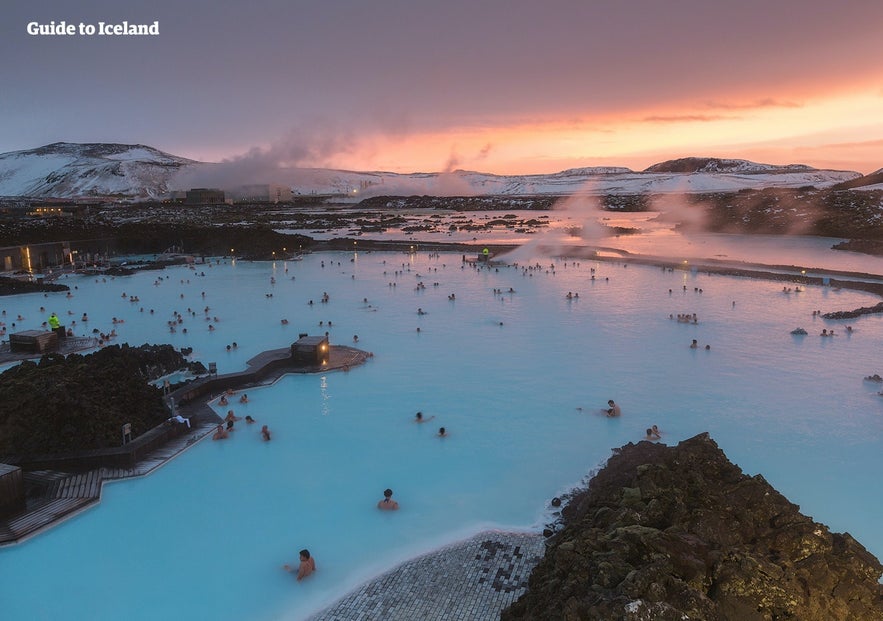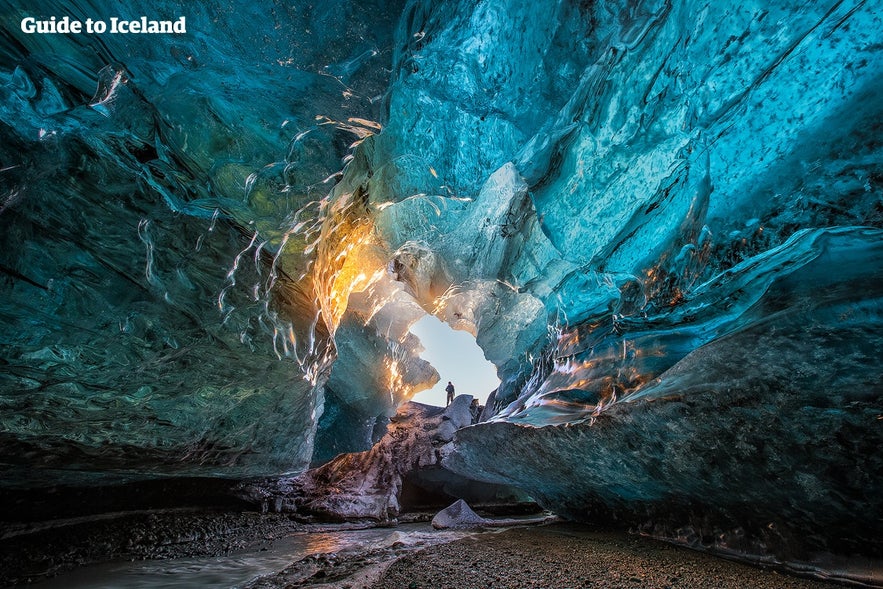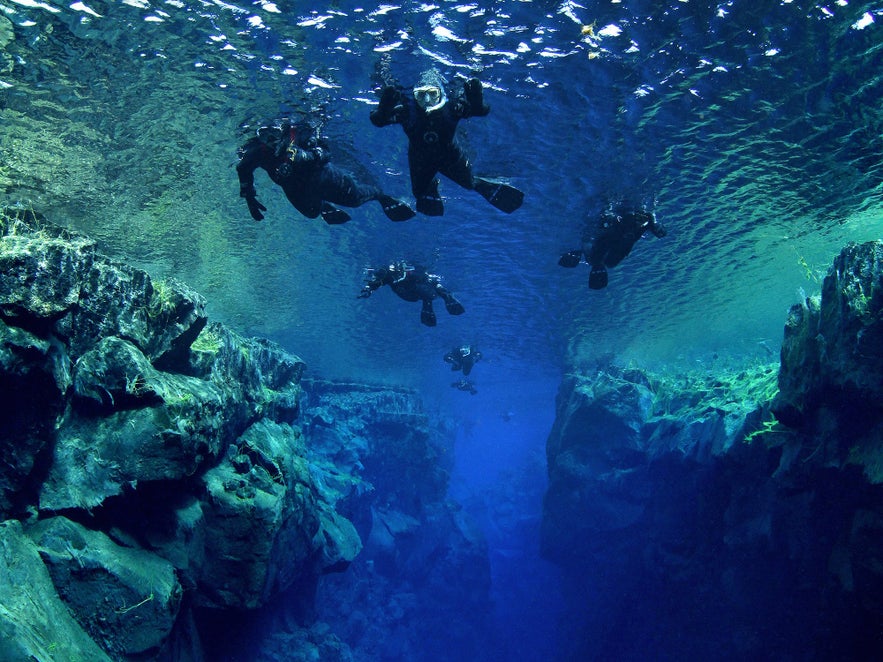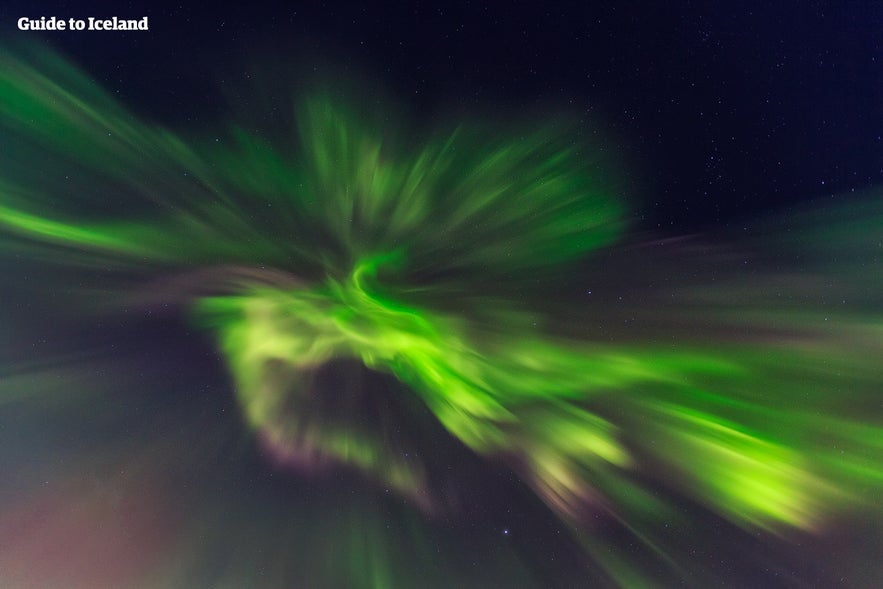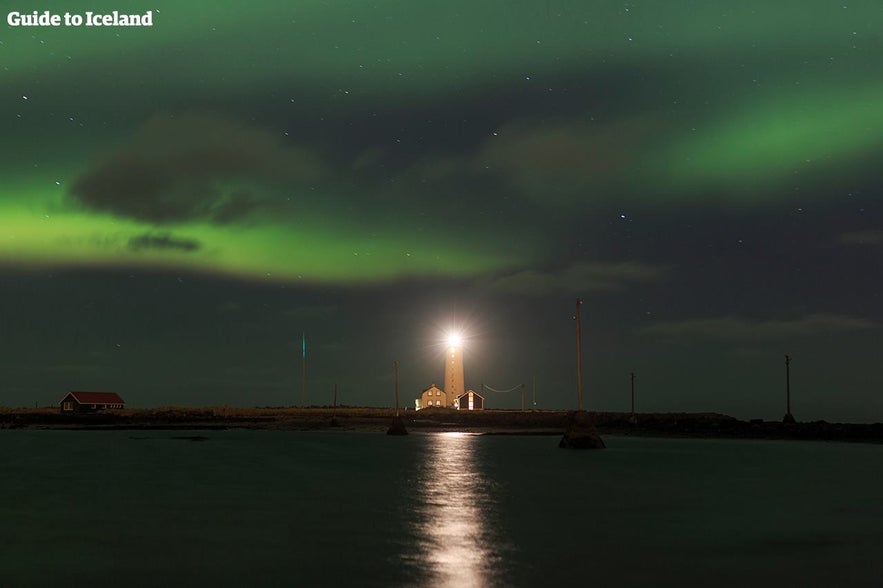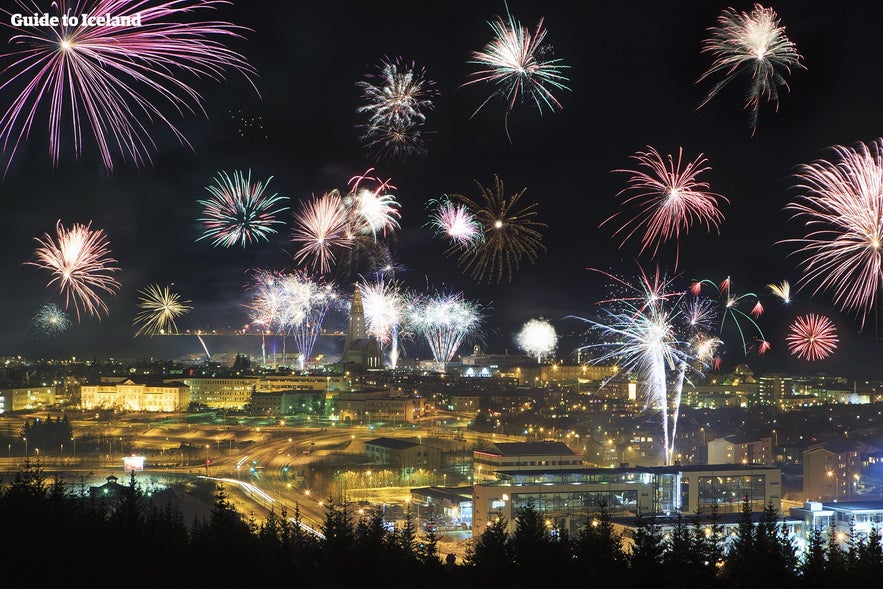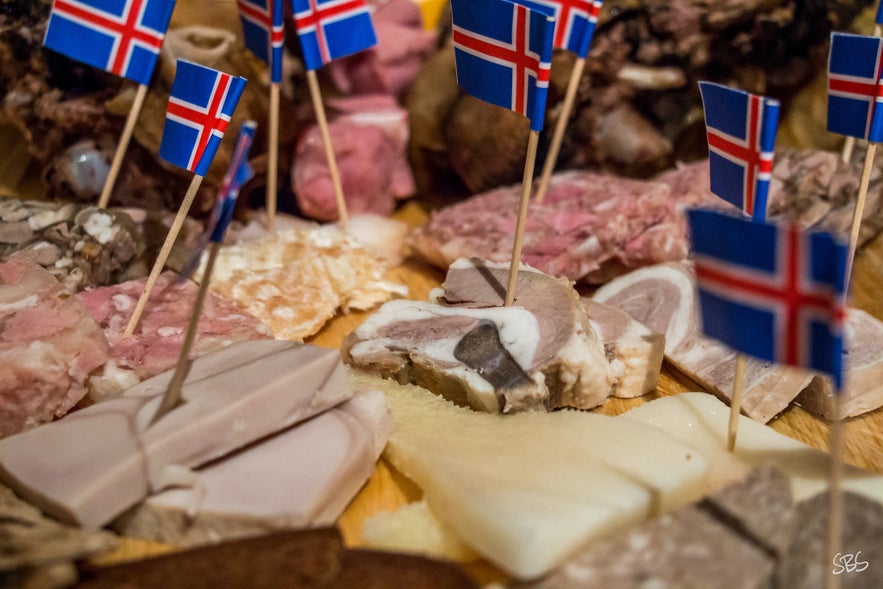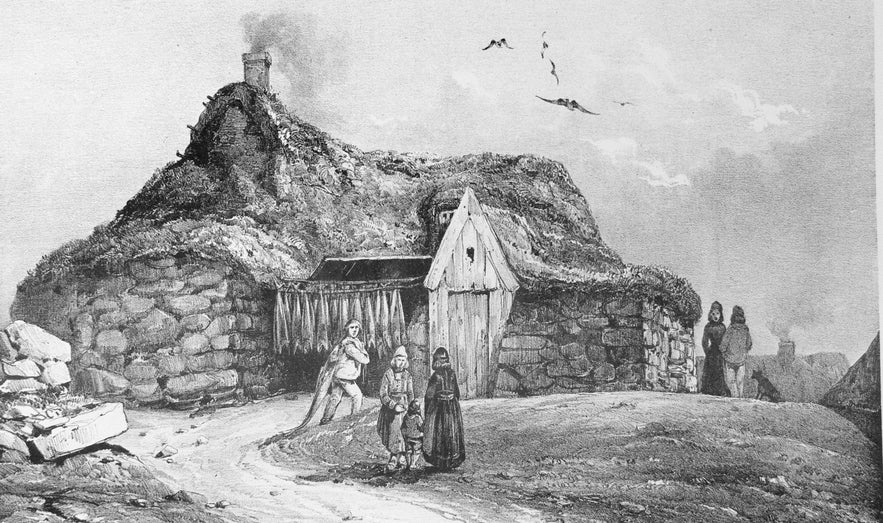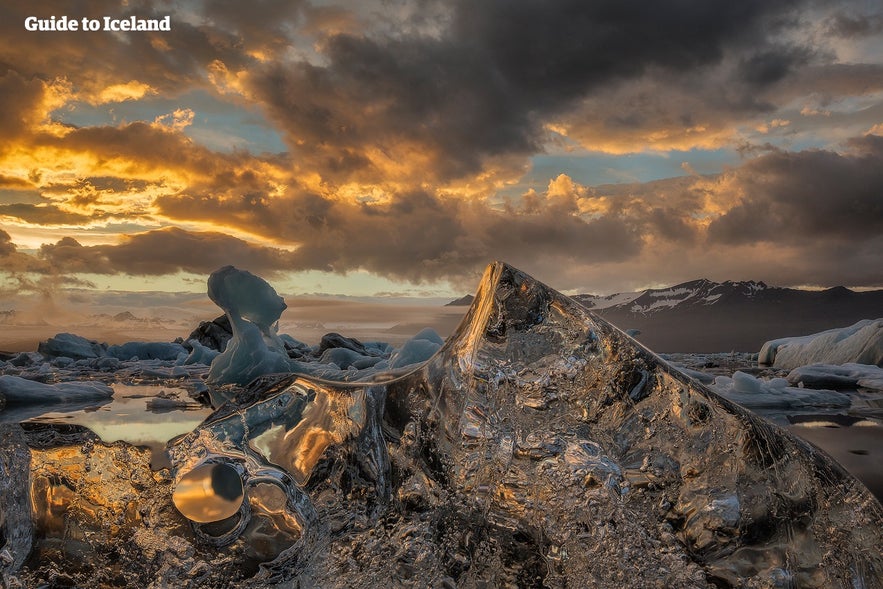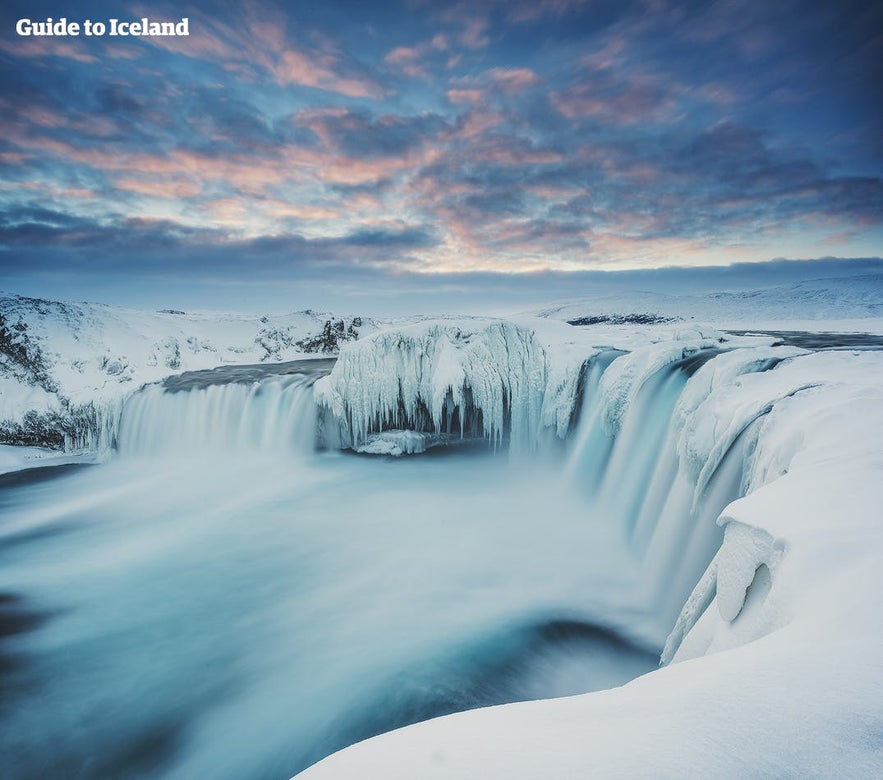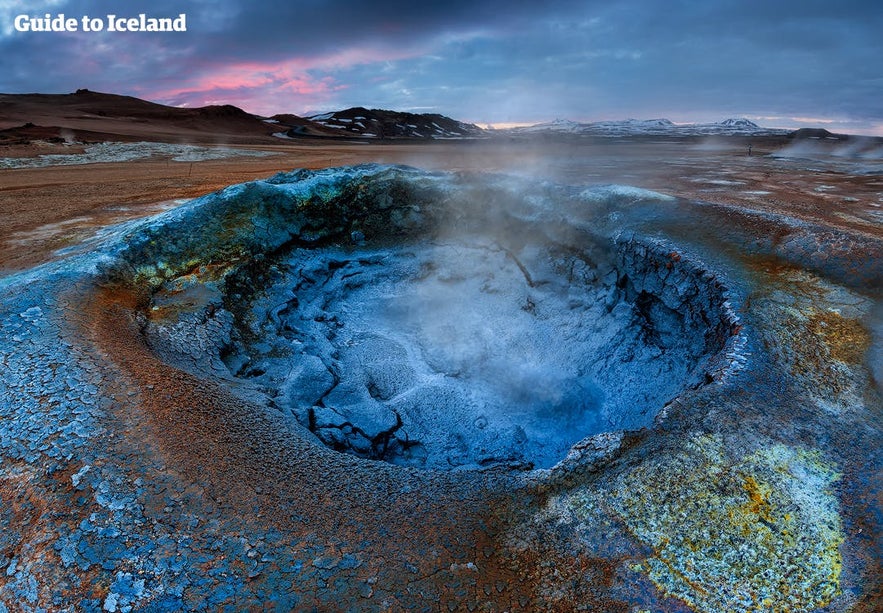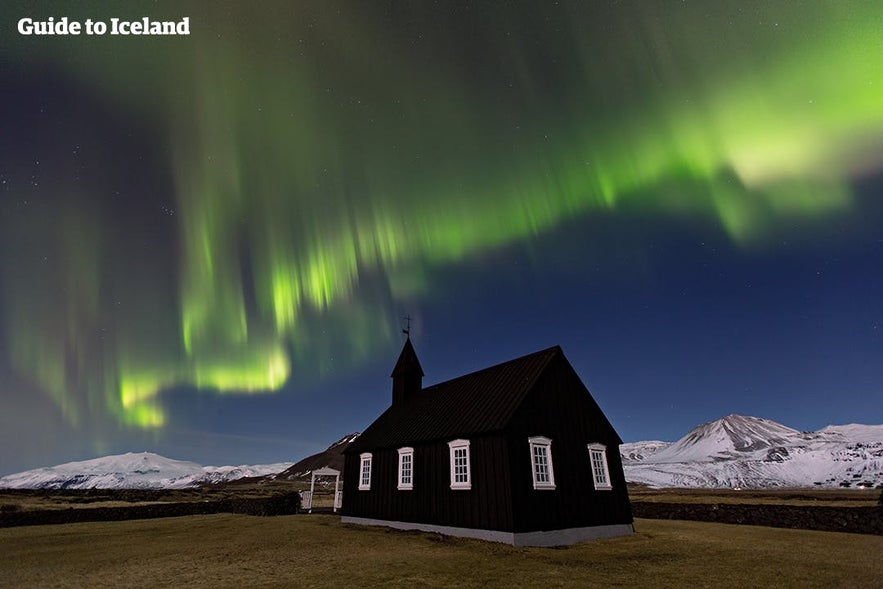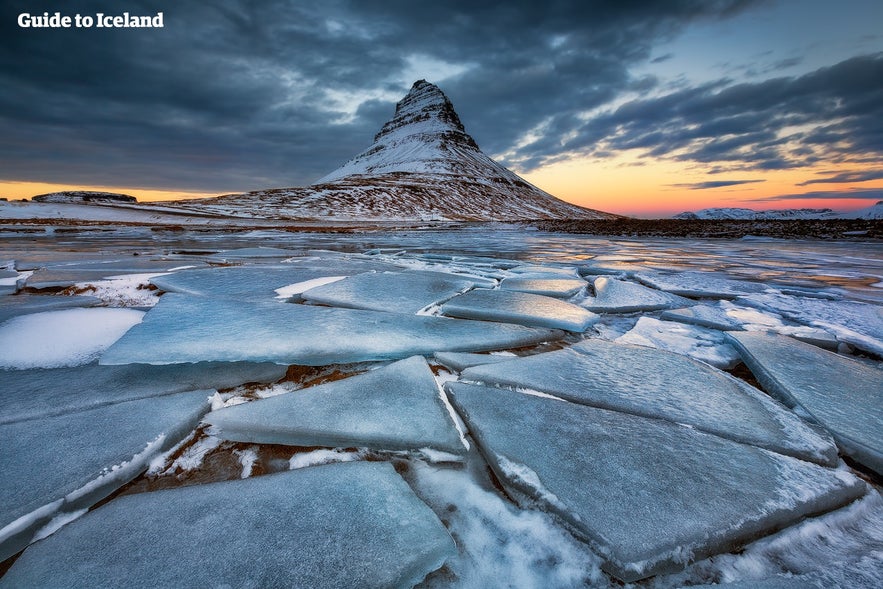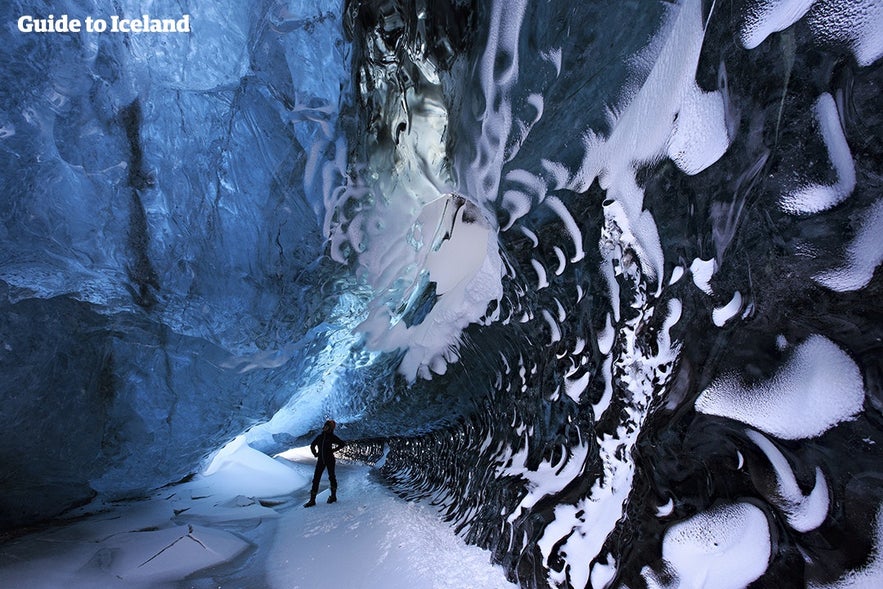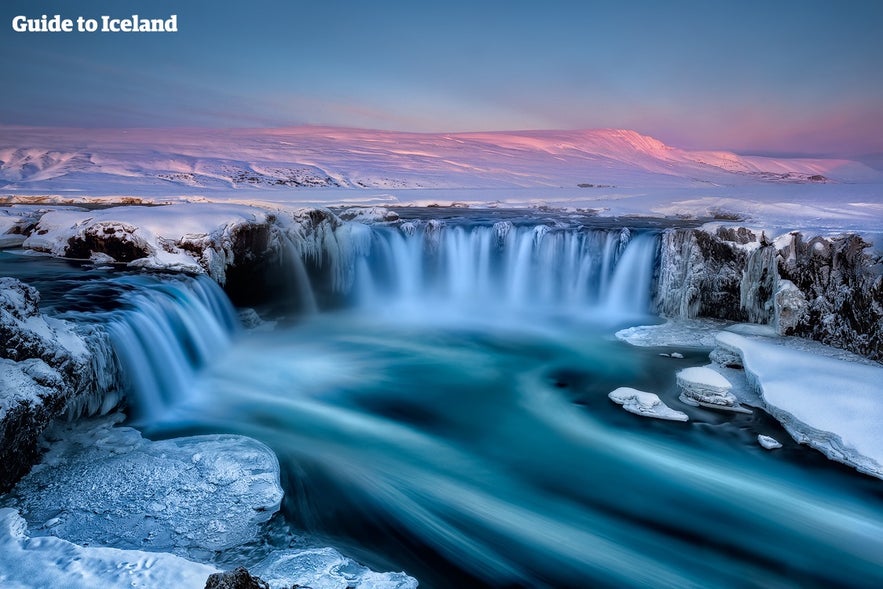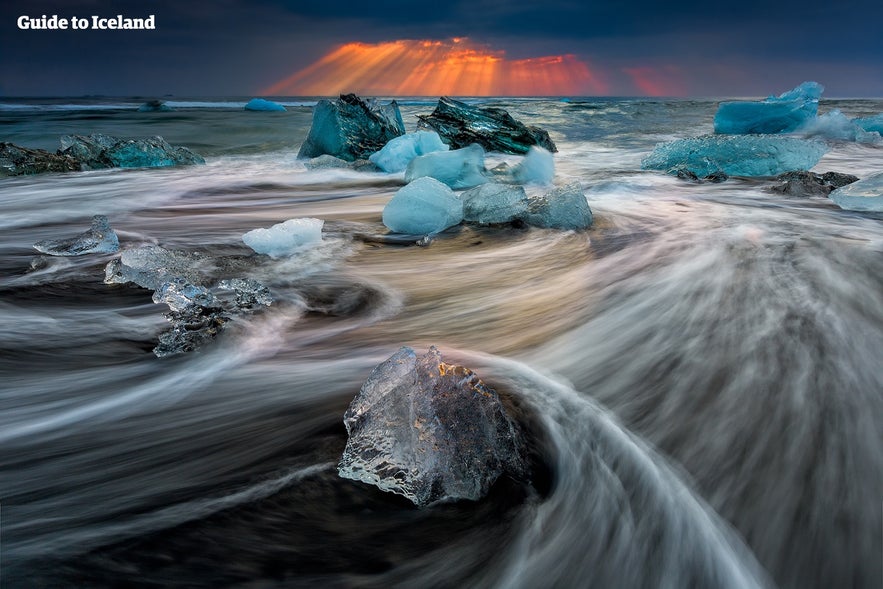
Visiting Iceland in January | The Ultimate Guide
- What To Do in Iceland in January
- Visit a Hot Spring or Geothermal Pool in Iceland
- Visit the Ice Caves of Iceland in January
- Take a Glacier Hiking Tour in Iceland
- Snowmobiling Tours in Iceland in January
- Snorkeling and Diving in Iceland in January
- Horseback Riding in Iceland in January
- See the Northern Lights in Iceland in January
- Festivals and Events in Iceland in January
- New Year's Eve in Iceland
- The Thirteenth of Christmas
- Dark Music Days
- The Reykjavik International Games
- Thorrablot
- What to See in Iceland in January
- The Golden Circle in Iceland in January
- Iceland's South Coast in January
- North Iceland in January
- The Snaefellsnes Peninsula in Iceland in January
- The Weather in Iceland in January
- Weather in Reykjavik in January
- Iceland Weather in January
- The Temperature in Iceland in January
- What to Pack for Iceland in January
- Driving in Iceland in January
- Suggested Itinerary for Visiting Iceland in January
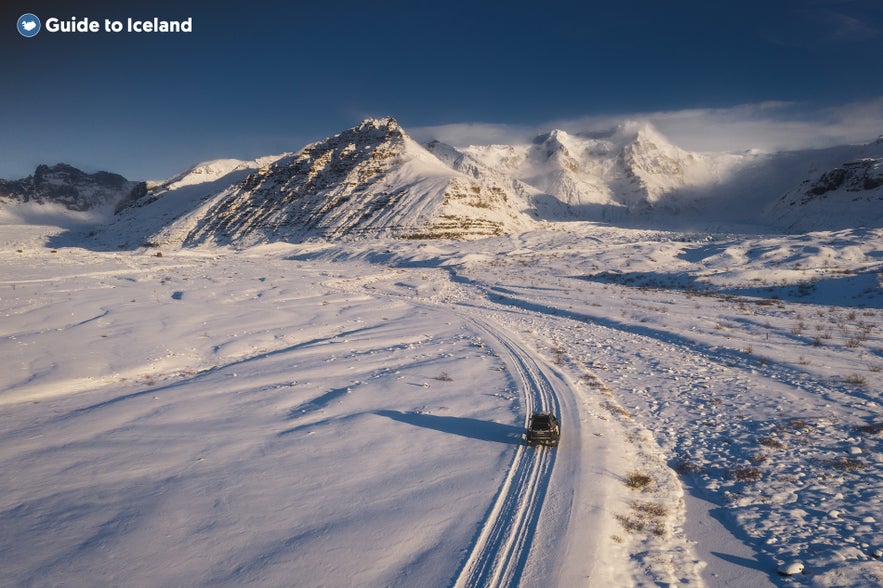
Learn everything there is to know about visiting Iceland in January, one of the best months for experiencing ice caving, glacier hiking, and northern lights hunting. Learn about the best things to do in January, what the weather is like, how to see the northern lights and more!
January is one of Iceland's darkest and coldest months. The sun is only out for a few hours a day, the roads are icy, and the landscapes can be covered in three feet (about one meter) of snow. However, there's no shortage of fun tours in Iceland in January, and visiting can be a magical experience.
In January, Christmas festivities are coming to a close, traditionally giving way to a lull in visitors to the country and effectively making it one of Iceland's quietest months. This gives you more privacy when exploring popular attractions and makes it easier to find rental cars and great accommodations in Iceland for better prices.
For those who choose to visit Iceland in January, the height of the low season, this country delivers beautiful frosted landscapes, more hours of darkness to go hunting for the northern lights, and fewer crowds at popular locations and attractions. Read on for everything you need to know about visiting Iceland in January!
- See more about visiting Iceland in Winter
What To Do in Iceland in January
The weather in Iceland in January is generally cold and snowy. Additionally, it gets dark in the late afternoon, making the days short. This might leave you wondering if January is a good time to visit Iceland, but don't let the weather put you off; there are a lot of things to do!
Multiple tours are still running across the country, some of which are best in the depths of winter, such as going on ice cave tours and, of course, viewing the northern lights.
As long as you make the most of the daytime hours, you won't find yourself short of exciting experiences.
Visit a Hot Spring or Geothermal Pool in Iceland
One of the best things to do in Iceland in January is to slip into one of the many naturally heated geothermal pools. Public swimming is part of life in Iceland. With dozens of geothermal public pools all around the country, no matter where you are, you'll be able to find one to take a winter swim.
With the colder temperatures, visiting a geothermal pool in January is a great experience. Many pool complexes have indoor and outdoor pools, which are great for swimming and relaxing in January. The embrace of the warm water is a wonderful contrast to the winter chill.
One of the highlights of a visit to Iceland is a trip to the famous Blue Lagoon. It's open year-round. The newly-opened Sky Lagoon is also great to visit, with its infinity pool overlooking the ocean and is easily accessible from the city center of Reykjavik.
Whether you choose a public pool or a bucket list experience like Blue Lagoon tours, swimming in these geothermal pools in cold weather is one of the best things to do in winter. The Blue Lagoon is located right between Reykjavik and Keflavik International Airport, so it can be a great way to start your trip in Iceland!
- Learn more: Iceland's Blue Lagoon: The Ultimate Travel Guide
- See also: The 30 Best Hot Springs and Geothermal Pools in Iceland
Visit the Ice Caves of Iceland in January
January is right in the middle of the ice-cave season, which starts around mid-October or November and lasts until March. The ice caves underneath the Vatnajokull glacier are quickly becoming Iceland's most fascinating destination during the winter when most of them are accessible.
This is often referred to as the best ice cave tour in the Vatnajokull glacier, and it departs from the Jokulsarlon glacier lagoon, a must-visit destination in Iceland.
- Check out the Ultimate Guide to Ice Caves in Iceland
- See also: The Complete Guide to Jokulsarlon Glacier Lagoon in Iceland
The ice caves change every year due to the continuous movement of glaciers. This variation means that no two visits are the same, and sometimes you might be lucky enough to see more than one while on tour.
There are two-day and three-day packages that leave from Reykjavik, which will allow you to enjoy the ice caves, surrounding areas, and the South Coast.
Take a Glacier Hiking Tour in Iceland
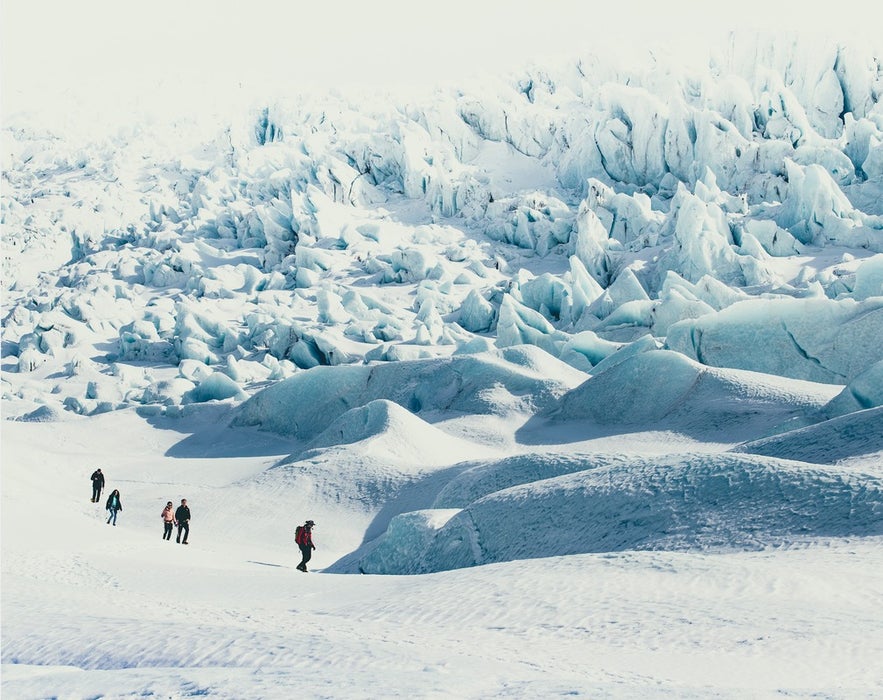
Photo from Adventurous 5-Hour Glacier Hike Tour in Skaftafell National Park
Most glaciers in Iceland are open for hiking throughout the year. This activity is excellent no matter when you do it, but in January, the glaciers have an otherworldly beauty as they're clad in fresh, electric blue ice.
Solheimajokull is one of the most accessible glacier to reach and hike in Iceland. It's just a few hours along the South Coast, and this minibus tour with glacier hiking runs every day from Reykjavik!
Those traveling in Southeast Iceland can take this adventurous 5-hour tour from the Skaftafell Nature Reserve to the Svinafellsjokull glacier. Another option is to take this glacier hiking tour on the Vatnajokull glacier from the Jokulsarlon glacier lagoon, where you'll hike up the outlet glacier, Breidamerkurjokull.
- Learn more with the Ultimate Guide To Glacier Tours in Iceland
Snowmobiling Tours in Iceland in January
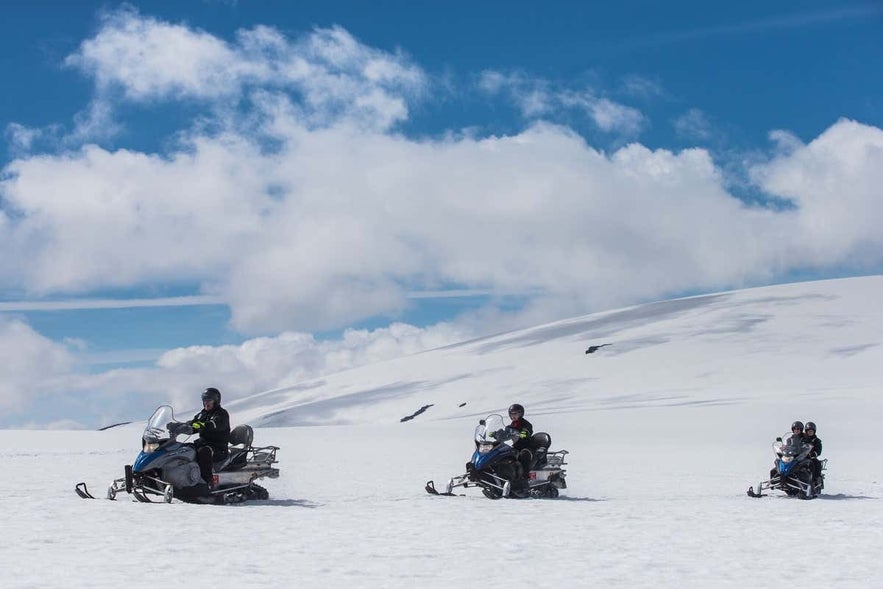 Photo from 10 Hour Super Jeep Tour of the Golden Circle with Snowmobiling and Transfer from Reykjavik
Photo from 10 Hour Super Jeep Tour of the Golden Circle with Snowmobiling and Transfer from Reykjavik
If you're not the hiking type, but would still like to explore Iceland's glaciers, there is a faster way to do it. A lot faster!
January is a great time of year to go snowmobiling and zoom across the fluffy, snowy plains of Iceland's glaciers. You can combine snowmobiling with a Golden Circle tour with a transfer from Reykjavik, or you can meet on location for this epic 2.5-hour snowmobiling tour on the Myrdalsjokull glacier.
As 11% of Iceland's surface is covered by glaciers, meaning there are multiple options when it comes to snowmobiling around the country. You are sure to find the perfect snowmobile tour for you and get the adrenaline pumping!
Snorkeling and Diving in Iceland in January
Snorkeling and diving in Iceland in January may seem like a terrifying prospect, but with modern drysuit equipment, it is, in fact, a rewarding and exciting opportunity!
Silfra, where most snorkeling and diving tours happen, is a natural spring in a fissure that never freezes over. It's regarded as one of the best diving spots in the world.
The reason for this is its location and visibility. Silfra is located in Thingvellir National Park and it's right between the tectonic plates of North America and Eurasia and is surrounded by incredible natural formations.
The Silfra ravine will be lined with snow and beautiful ice sculptures at this time of year, making the surroundings even more dramatic, which makes the scene especially magical for photographers.
It's also a spring. Therefore, the water has been filtered underground for decades through porous lava rock, meaning the visibility exceeds 328 feet (100 meters).
- Learn about Scuba Diving and Snorkelling in Iceland
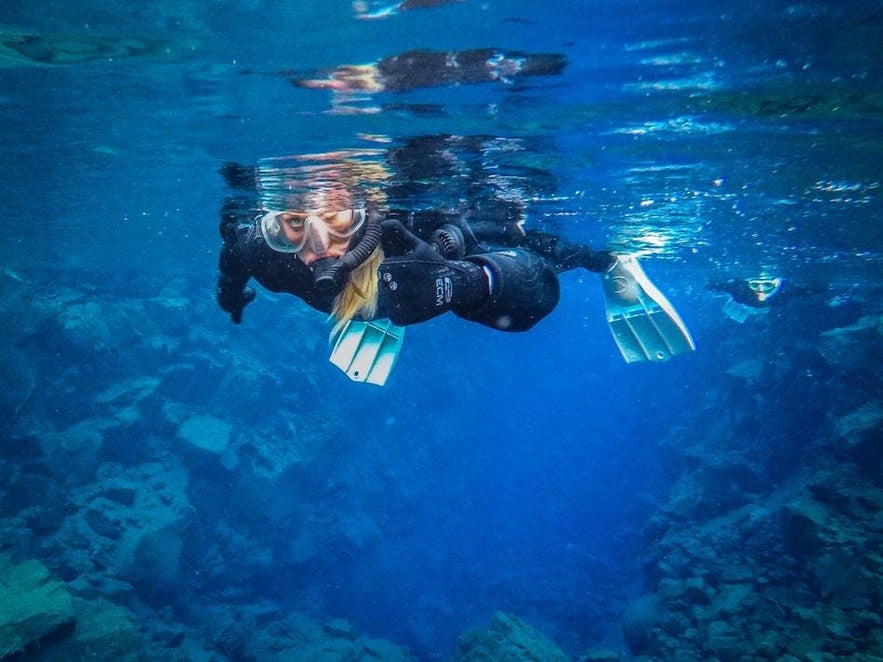
Snorkeling Safety Requirements
Although snorkeling and diving in Silfra in January is a reasonably safe activity, you must meet the following conditions to partake:
- Minimum age: 12
- Maximum age: 60
- Minimum height: 4 feet 7 inches (145 centimeters)
- Minimum weight: 99 pounds (45 kilograms)
- Experience needed: must be able to swim
- Minimum age: 14
- Maximum age: 60
- Minimum height: 4 feet 9 inches (150 centimeters)
- Minimum weight: 110 pounds (50 kilograms)
- Experience required: must be able to swim
- Minimum age: 17
- Maximum age: 60
- Minimum height: 4 feet 9 inches (150 centimeters)
- Minimum weight: 99 pounds (45 kilograms)
- Experience needed: At least 10 logged drysuit dives OR be a certified dry suit diver
It's possible to take snorkeling or diving tours from Reykjavik. You can even combine snorkeling tours with other activities, such as this lava tunnel caving and Silfra snorkeling tour or this Golden Circle tour with snorkeling.
Horseback Riding in Iceland in January
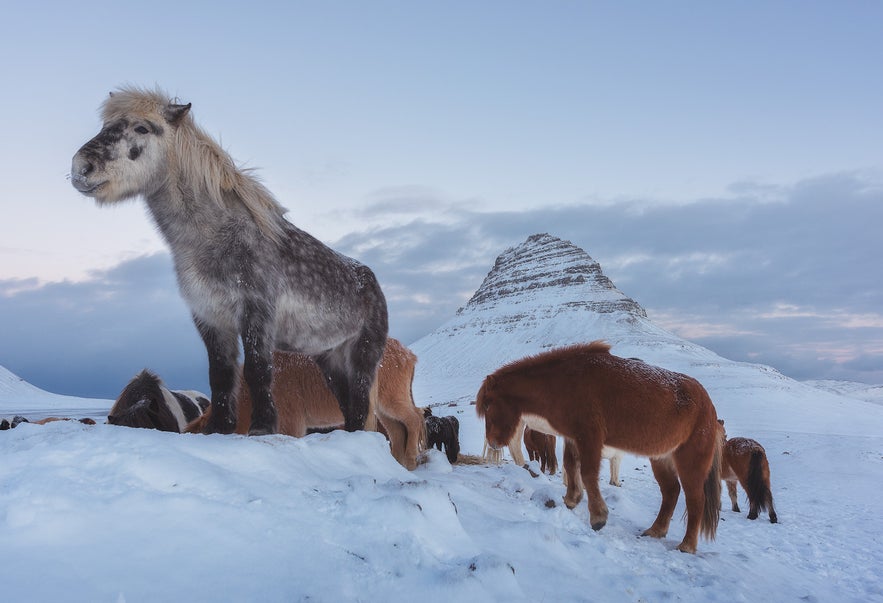
Horseback riding is possible throughout the year in Iceland and is very popular among locals and visitors. Not only will this experience allow you to see some beautiful winter landscapes, but it will also introduce you to the charming Icelandic horse.
This Icelandic horse breed has many unique traits. It is incredibly sure-footed, as it has traveled black sands, rivers, and lava fields for over 1000 years. It has five gaits, while other horses have just three or four, the fifth gait being "tölt," which is a smooth and ground-covering four-beat gait.
Secondly, it's well-beloved across the world because of its curiosity and intelligence relative to its mainland counterparts, as any Icelandic horse owner will tell you. In January, the Icelandic horse has its winter coat, making them look extra fluffy and adorable!
There is a wide selection of horseback riding tours to choose from, many of them departing from Reykjavik. They can also be combined with excursions, like with this Golden Circle and horse riding tour or this horse riding and whale-watching day tour.
See the Northern Lights in Iceland in January
Can you see the northern lights in Iceland in January? Yes!
Visitors in January have an excellent chance of seeing these elusive lights. With fewer sunlight hours, there's a greater chance of spotting them.
The sunrise and sunset times during January are as follows:
January 1
- Sunrise: 11:19 AM
- Sunset: 3:44 PM
- Hours of daylight: 4 hours and 24 minutes
January 31
- Sunrise: 10:10 AM
- Sunset: 17:10 PM
- Hours of daylight: 7 hours and 2 minutes
You can often see the aurora borealis in Reykjavik. However, the less surrounded by light pollution, the better your view will be. You can find great northern lights hotels for better-viewing chances, but if you're staying in Reykjavik and seeking an excellent show, you should get out of the capital and into nature.
A visit to Thingvellir National Park or the Hvalfjordur fjord, both a 40-minute drive from Reykjavik, can greatly improve your chances of a spectacular light show.
For affordability, you can go on this northern lights bus tour from Reykjavik, or you can get further into the countryside and reach places other vehicles can't with this Super Jeep northern lights tour with a professional photographer.
From Reykjavik, you can take this unique northern lights boat cruise, which offers the unique opportunity to not only witness the auroras in the sky but also admire them reflected in the water!
You can also pick up a Reykjavik rental car and hunt for the northern lights yourself out in nature. You'll want to ensure the aurora forecast is rated above three and check the cloud cover to find the places with the clearest skies.
At this time of year, you should only rent four-wheel-drive vehicles like jeeps or SUVs. All rental cars should be equipped with winter tires to ensure maximum traction on snowy roads. Renting a car in Iceland in January does come with risks and should only be undertaken by confident drivers experienced on icy country roads.
- Learn more: Best Guide to Rental Car Sizes in Iceland
- Discover the Best Advice For Renting a Car in Iceland
Festivals and Events in Iceland in January
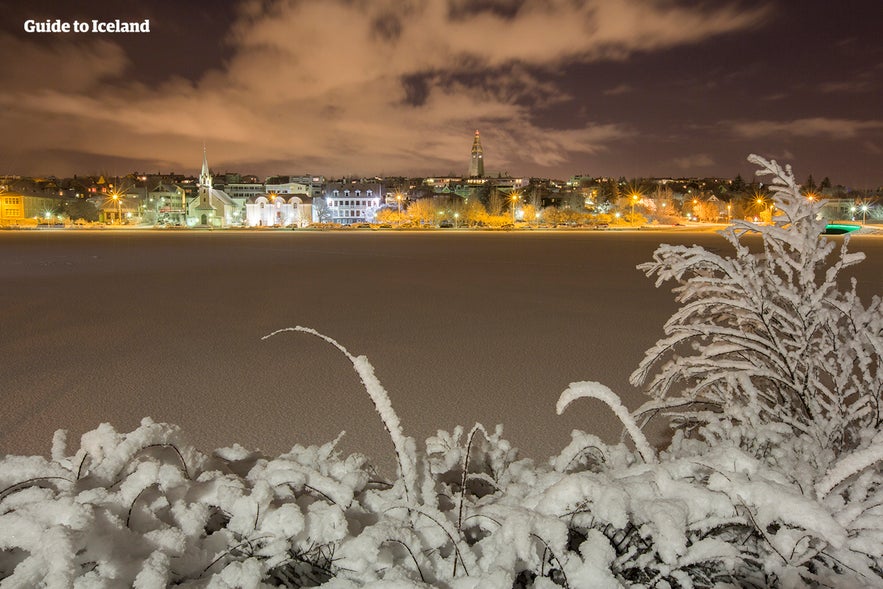 Festivals occur throughout the year across Iceland. While the summer months are generally much busier, there are still exciting cultural events throughout January that draw many visitors.
Festivals occur throughout the year across Iceland. While the summer months are generally much busier, there are still exciting cultural events throughout January that draw many visitors.
New Year's Eve celebrations start on December 31st. In the evening, locals come together around numerous bonfires around the Capital Region, known as "brenna," symbolizing the burning away of the old year's troubles.
Every December, Icelanders buy thousands of fireworks, and at midnight, the sky lights up with a colorful display that lasts throughout the night all over the city.
Vantage points such as the churches of Hallgrimskirkja and Kopavogskirkja allow you to see the fireworks going off all over the surrounding area. You'll struggle to find a more exciting New Year's Eve than in Reykjavik, and it's certainly one of the most fun party nights of the year!
- Learn more about New Year's Eve in Iceland
The Thirteenth of Christmas
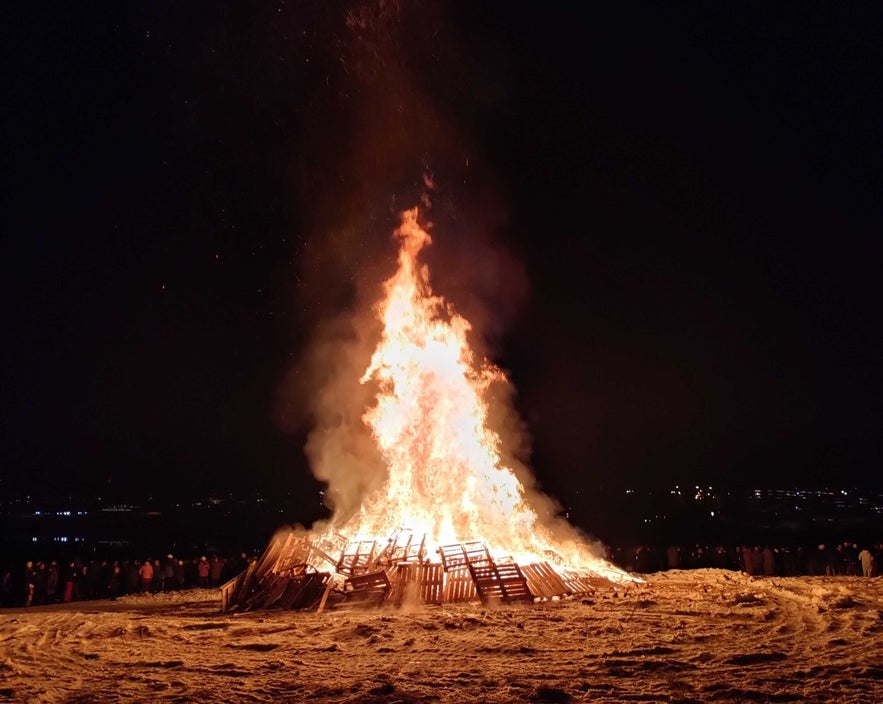 The Icelandic Christmas season ends on January 6th as it's "the thirteenth day of Christmas" or "Þrettándinn" in Icelandic. There's a lot of folklore that surrounds this day, as cows are said to gain the ability to talk, the hidden people move homes, and the last of the 13 Icelandic Yule Lads returns to their home in the mountains.
The Icelandic Christmas season ends on January 6th as it's "the thirteenth day of Christmas" or "Þrettándinn" in Icelandic. There's a lot of folklore that surrounds this day, as cows are said to gain the ability to talk, the hidden people move homes, and the last of the 13 Icelandic Yule Lads returns to their home in the mountains.
The day is celebrated with bonfires in several locations around Reykjavik and the countryside, and any leftover fireworks from New Year's Eve are ignited in celebration. You can also find fun cultural events to celebrate the day.
- Learn all about the Icelandic Yule Lads and Gryla | Iceland's Christmas Trolls
Dark Music Days
For music lovers, the Dark Music Days festival takes place in early January, hosted at Harpa Concert Hall and various other locations by the Icelandic Composers' Society.
The festival brings national and international talent, showcasing innovative contemporary music and new Icelandic compositions. Established in 1980, the festival has premiered more new works of music than any other Icelandic cultural event.
The Reykjavik International Games
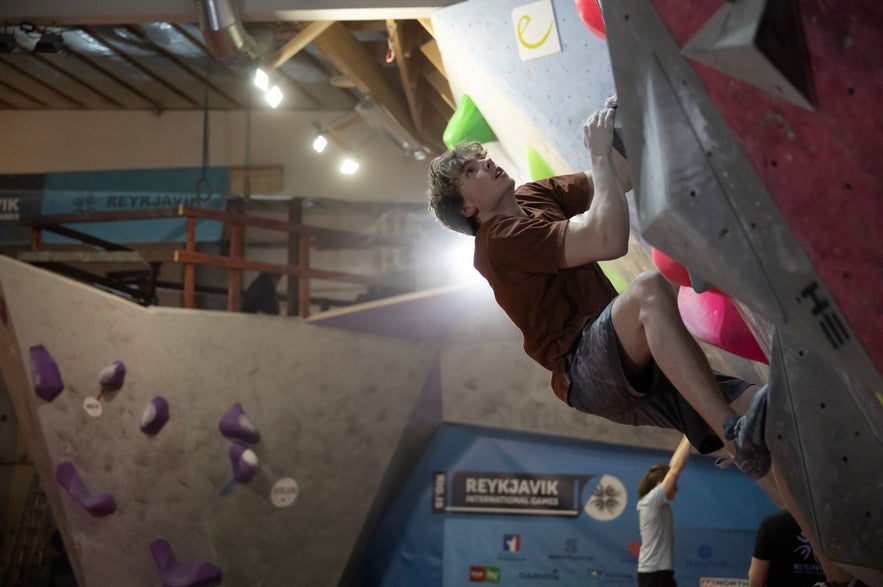
Climbing is one of the many sports that are part of the Reykjavik International Games.
Every year in late January, the Reykjavik International Games take place in the Laugardalur valley stadium. Competitions take place in 20 different disciplines, ranging from karate, athletics, climbing, swimming, and cross-fit. In recent years, some e-sports have even been included in the program.
World records have been set at this competition, and many national records are regularly set for Icelandic sports. The games take place across two weekends, and there's a wide range of different sports and games for anyone to enjoy.
Thorrablot
Thorrablot is a cultural event that happens in the lunar month of "Þorri," in the old Icelandic calendar. The first day of Thorri is Bondadagur (Man's Day), when people honor the men in their lives. Thorri ends in mid-February with Konudagur (Woman's Day), when, in turn, people celebrate the women of Iceland.
During this festival, Icelanders honor their history by dining on various foods that have been eaten in Iceland through the centuries.
Iceland has mostly been a poor country throughout its history, and surviving the long dark winters was very hard. Icelanders had come up with various ways to make the food last during the winter when nothing could grow and make sure to use absolutely everything of the animal, as no food could be afforded to be wasted.
Therefore, some of the food items that are eaten during Thorri, might not seem appetizing to outsiders, but they were necessary for Iceland's survival for over 1000 years. Some of these food items include "svið" (boiled sheep's head), "hákarl" (fermented shark) or "hrútspungar" (ram's testicles).
The dishes are usually served with "brennivin," Iceland's signature distilled beverage, sometimes called Black Death in English. After the feast, locals party all night long, telling stories and singing. Being invited to one of these feasts is a real honor!
Icelandic turf house with hardfiskur (stockfish) being dried outside. Photo from Wikimedia Creative Commons.
Not all of the food is so intimidating. You can also have some tasty smoked lamb known as "hangikjöt" or highly nutritious stockfish "harðfiskur." During the months of January and February, many of these local dishes are sold in supermarkets, in case you want to try them.
You can also experience them as part of fun food and drink tours, like with this 3-hour tour traditional Icelandic food tour in Reykjavik or this small-group 3-hour food walking tour.
- Learn about Icelandic Food: The Ultimate Guide to Iceland Food Culture
- See also: Disgusting Food in Iceland
What to See in Iceland in January
Since January is the height of winter, many parts of Iceland are not accessible. The roads into the Highlands, for example, are entirely blocked with snow, many parts of the Westfjords cannot be reached, and it can be tough to navigate the East Fjords.
However, the most popular destinations, such as the Golden Circle, South Coast, and Snaefellsnes peninsula, are still easy to reach and particularly beautiful under a blanket of winter snow. Just be mindful of the Icelandic weather forecast!
Some of the top things to do in Iceland in January are popular sights year-round, but they can be even more spectacular in winter.
The Golden Circle in Iceland in January

Of all the attractions in Iceland, those on the Golden Circle route are the most popular. Thingvellir National Park is usually first visited from Reykjavik. It's where you can see the divide between the North American and Eurasian tectonic plates, known as the Almannagja gorge. It's surrounded by tall mountains, mossy lava fields, and waterfalls, which characterize the entire area.
It was here that, in 930 AD, the early settlers of Iceland formed what would later become the longest-running, working parliament in the world. It was also where Iceland's Declaration of Independence was ceremoniously signed on June 17th, 1944.
The Geysir Geothermal Area in Haukadalur valley is the second stop on your drive around the Golden Circle. Steaming fumaroles and streams break up the snowy earth, and the soil wears unusual and vivid colors. It's where the geyser Strokkur erupts every five to ten minutes, giving you plenty of photographing opportunities.
- Check out the Ultimate Guide to Iceland's Golden Circle
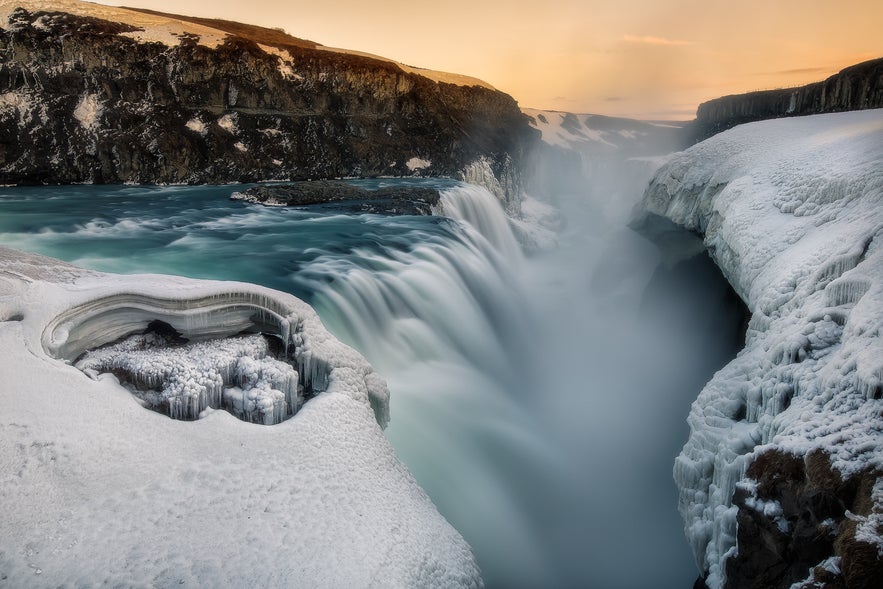
Finally, you'll get the chance to see the Gullfoss waterfall. One of Iceland's most iconic sites, it pours in two tiers down into a dramatic gorge.
In January, the rocks surrounding it are caked in ice, making it even more mesmerizing to look upon - a true winter wonderland.
There are multiple Golden Circle tours to choose from, whether it be on a bus, minibus, jeep, or self-drive tours. You can also pair your journey with another experience, like with this Golden Circle and Blue Lagoon tour!
Iceland's South Coast in January
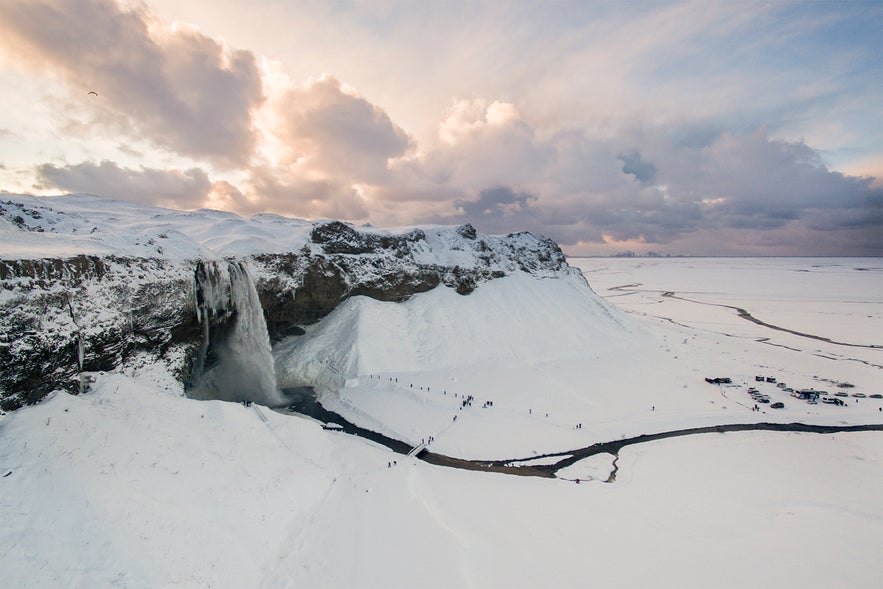
The South Coast is second to the Golden Circle in terms of iconic Iceland routes. The Ring Road, southeast of Reykjavik towards the town of Vik and even further to Hofn, has many incredible features and is worth visiting.
The first sights you'll reach are two waterfalls, Seljalandsfoss and Skogafoss. The former tumbles off a concave cliff, making a very unusual sight, whereas the latter is much wider and more powerful.
Continuing along the route, you'll see many glaciers, such as Solheimajokull, Myrdalsjokull, which covers the Katla volcano, and the notorious Eyjafjallajokull volcano, before reaching Vik.
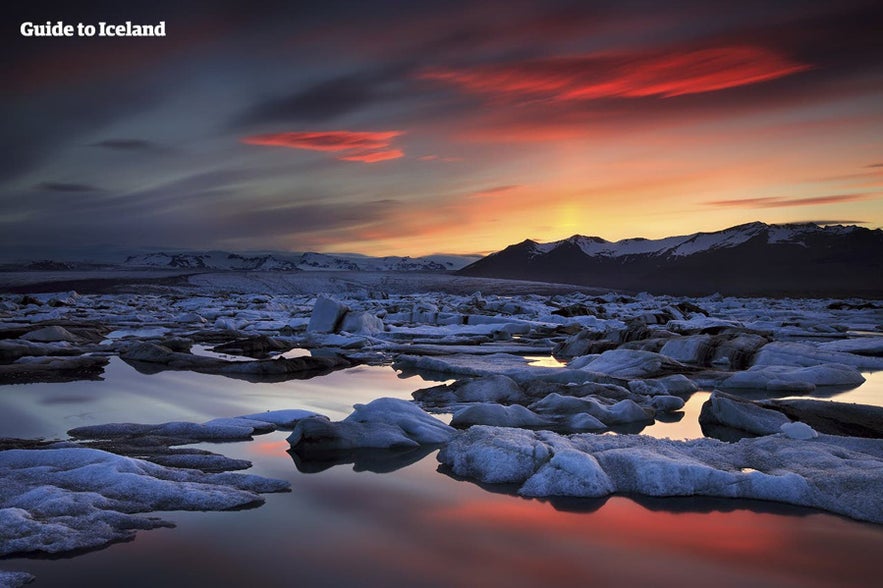
Around the charming town of Vik, there's some beautiful coastal scenery. You can see the Dyrholaey cliffs and rock arch, Reynisfjara black sand beach, and the Reynisdrangar sea-stacks.
The waves are unpredictable and dangerous around Vik, so take good care. After enjoying this area, you'll travel through the vast lava fields of Eldhraun until you reach the Skaftafell Nature Reserve.
Skaftafell is a lovely region with lava fields and forests, glacier tongues and lagoons, rivers and waterfalls. It's especially popular with hikers, as routes are tailored to all abilities. One of the best routes will take you to Svartifoss waterfall, renowned for the dark hexagonal basalt columns surrounding it.
The final site on the South Coast is Jokulsarlon, the famous glacier lagoon. Watching the icebergs cruise across the lake to the sea is mesmerizing. Some can even reach the size of multi-story buildings!
When they reach the ocean, they wash up on the black-sand shore of Breidamerkursandur, nick-named Diamond Beach due to the way they glitter in the surf.
There are many South Coast tours to choose from, like this small group South Coast tour from Reykjavik, or you can do exciting self-driving activities such as glacier hiking, ice caving, or snowmobiling!
- See more: The Ultimate Guide to Iceland's South Coast
- See also: Best Restaurants on the South Coast of Iceland
North Iceland in January
North Iceland is an incredible place and is accessible through the winter season, as long as you're ready to tackle heavy snow. It's possible to drive there or take a flight to Akureyri from Reykjavik's domestic airport if the weather permits.
Covered in a blanket of snow and lit with festive lights, Akureyri is an incredibly charming town. It has many boutiques, restaurants, and bars and is surprisingly lively throughout the year. The town arguably contains the best ski slopes in Iceland, and you can also embark on many tours from Akureyri for an exciting adventure.
- Discover the Best Restaurants in North Iceland
- Learn about Akureyri, the Capital of North | Culture, History and Activities
By driving a short distance outside Akureyri, you'll be able to see incredible waterfalls, such as Godafoss, and Dettifoss, if the road conditions permit. North Iceland's most popular destination throughout the year is Lake Myvatn.
This diverse region is renowned for its wide array of sites, such as the lava fortress Dimmuborgir, the Namafjall geothermal area, the Viti crater, and the Skutustadagigar pseudo-craters.
Many scenes of the HBO series Game of Thrones were filmed around the area of Lake Myvatn, if you want to put yourself in the footsteps of Jon Snow and Daenerys Targaryen. You can even have the ultimate immersive experience with Game of Thrones tours which will bring you to the world of Westeros.
- Check out the The Ultimate Guide to Lake Myvatn
- See also: The Ultimate Guide to Game of Thrones in Iceland
The Snaefellsnes Peninsula in Iceland in January
The Snaefellsnes peninsula has gained the nickname "Iceland in Miniature" since its 56-mile (90-kilometer) coastline has many diverse landscapes and features that characterize Iceland's nature.
Nowadays, the best-known attraction in the Snaefellsnes peninsula is Mount Kirkjufell. This arrowhead-shaped mountain is just a 1.5-mile (2.5-kilometer) drive from the village of Grundarfjordur and was featured in Game of Thrones.
The second best-known attraction is the Snaefellsjokull glacier and volcano, made famous in Jules Verne's classic science fiction novel, "Journey to the Center of the Earth."
- Plan your trip with the Top 16 Things to Do on the Snaefellsnes Peninsula
These are not the only sites you can see on the Snaefellsnes peninsula in January. You can encircle it and see features such as the seal colony at Ytri Tunga and the coastal fishing villages of Arnarstapi, Hellnar, and Stykkisholmur. Along the way, you will find natural wonders such as Djupalonssandur beach, the Budahraun lava fields, and the Londrangar basalt towers.
While the region offers opportunities for fantastic winter self-drive tours, you can also visit with a variety of Snaefellsnes tours from Reykjavik.
It can be visited as a day trip, but we highly recommend taking at least two days to fully immerse yourself in the region and staying a night in Snaefellsnes accommodation.
The Weather in Iceland in January
There are many things to see and do in Iceland in January, but the weather this time of year concerns many visitors. How cold is Iceland in January? Find that answer and more below.
Weather in Reykjavik in January
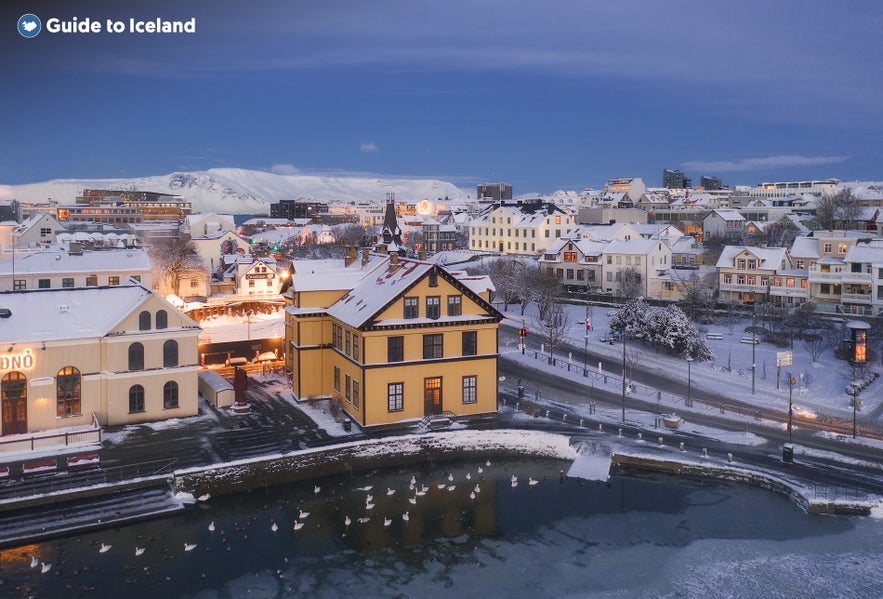 The temperature in Reykjavik in January averages between 33.8 F° and 23 F° (1 C° and -5 C°). It can get as cold as 14 F° (-10 C°), but this is uncommon. If you are leaving Reykjavik, it's wise to check the Icelandic Meteorological Office's website to learn what the weather is like at your destination.
The temperature in Reykjavik in January averages between 33.8 F° and 23 F° (1 C° and -5 C°). It can get as cold as 14 F° (-10 C°), but this is uncommon. If you are leaving Reykjavik, it's wise to check the Icelandic Meteorological Office's website to learn what the weather is like at your destination.
Iceland Weather in January
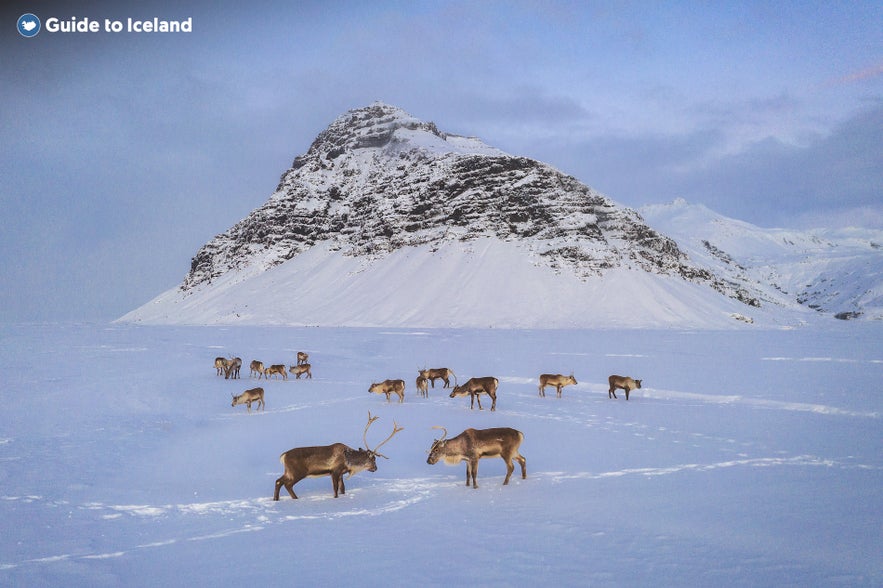
Iceland's weather in January can be notoriously fickle. January is a reasonably wet month and there's an average of 3.5 inches (88 millimeters) of precipitation, which will come in all forms. You'll likely experience rain, snow, hail, wind, and even some sun during your January stay in Iceland.
Keep an eye on the weather forecast because storms are common in winter. Storms can bring powerful winds with them, so pay attention to weather warnings, especially if you are on a winter self-drive tour around Iceland.
The Temperature in Iceland in January
Overall the average temperature in Iceland in January is 31 F° (-1 C). However, it may be more windy or wet depending on the different areas you visit. For example, the southern areas of Iceland may be warmer than the northern regions.
You cannot change the weather, so make sure to account for some flexibility when planning your Iceland itinerary, and consider some indoor backup plans.
- See the Best Itineraries in Iceland | Self-Drive Summer and Winter Adventures
- Also, learn How Many Days to Spend in Iceland
What to Pack for Iceland in January
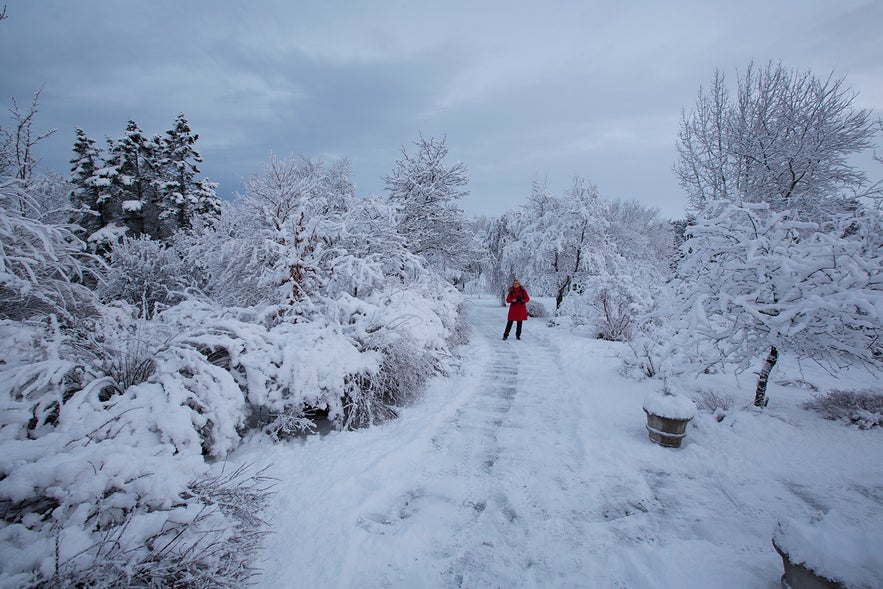 A January trip to Iceland promises enchanting snowy landscapes, shimmering northern lights, and chilly temperatures. To fully enjoy this winter wonderland, thoughtful packing is essential.
A January trip to Iceland promises enchanting snowy landscapes, shimmering northern lights, and chilly temperatures. To fully enjoy this winter wonderland, thoughtful packing is essential.
-
Layered clothing: Start with thermal base layers. Opt for moisture-wicking and insulating materials like merino wool or synthetic blends. Over that, add a mid-layer like a fleece or down-filled vest. This will allow you to easily remove or add on clothing if you're too warm or cold.
-
Waterproof and insulated outerwear: A waterproof and windproof jacket is crucial, ideally with insulation. Your pants should also be water-resistant, especially if you plan to hike or spend a lot of time outdoors.
-
Footwear: Insulated, waterproof boots with a sturdy grip are a must. Iceland's terrain can be slippery and wet, especially with ice and snow. If possible, bring crampons, as the streets can be very slippery when covered in ice.
-
Accessories: Woolen or thermal socks, a warm hat covering your ears, and a scarf or buff will protect against biting winds. Bring warm waterproof gloves. If you plan to go northern lights hunting, you can bring additional touch-sensitive gloves so you can take photos and adjust any camera settings without removing them.
-
Swimwear: Don't forget this! Even in January, you might want to relax in one of Iceland's geothermal pools or the famous Blue Lagoon.
-
Backpack: A waterproof backpack will help keep your gear dry during excursions.
-
Thermos: There are a few things as cozy as enjoying a cup of hot chocolate or coffee when outside in the snow, so bring a thermos to make the most of any outside exploration.
-
Sunglasses: If you plan to drive, consider bringing sunglasses to shield your eyes from the glare of snow and ice.
-
Skincare: The cold can be really harsh on your skin, so bring good hand cream, lip balm, and moisturizer.
Lastly, always check the weather forecast and adjust your clothing accordingly. The harshness of winter varies from year to year, and Iceland's weather can be unpredictable. Being prepared ensures your adventure is comfortable, memorable, and safe.
- See more about What To Pack for Iceland for All Seasons
Driving in Iceland in January
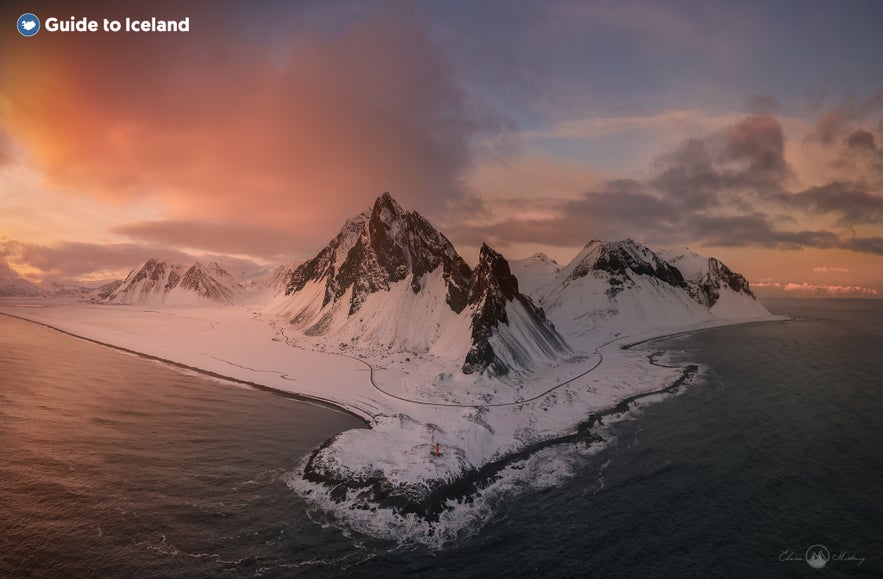
If you want to rent a car in Iceland in January, we recommend you only do so if it's a four-wheel drive and you have a lot of experience driving on icy roads.
Winter tires are mandatory in Iceland between November and April, so your rental car will have proper tires. When you pick up your rental car, double-check the tires to be sure.
It's also wise to read up on driving in Iceland, as some rules, conditions, and terrain may differ from what you're used to.
Before every journey, you should make sure to check road conditions. It's not only the weather you need to worry about. Roads can also be closed by avalanches and heavy snow.
If a particular road is marked as closed, it's not possible to drive it. Do not attempt to drive on closed roads, as you'll be putting both yourself and those who will need to come to help you at risk.
You might also face fines and high towing fees, which are not covered by insurance.
Suggested Itinerary for Visiting Iceland in January
There are many things to do in Iceland in January, and you can tailor any itinerary to suit your group's needs, budgets, desires, and time constraints. Below, however, are general itineraries.
Most people visiting Iceland in January will feel more comfortable taking guided tours than driving themselves. That way, there's no stress associated with navigating the dark, icy roads in inclement weather.
One way to eliminate all stress is to book a vacation package that includes all accommodations, transfers, and tours.
A vacation package is a great way to see as much of Iceland as possible - some even circle the whole country, allowing you to see the remote East Fjords, which can otherwise be challenging to traverse in winter.
The shortest time needed is around a week, which you can do with this 8-day guided winter tour around Iceland. However, if you take a more extended package, such as this small-group twelve-day package, you'll see more sites like the Snaefellsnes peninsula.
Both of these tours will allow you to have an opportunity to explore an ice cave and hike a glacier.
You'll also have ample opportunity to spot the magical aurora borealis in the endless night sky, which is made especially easy by embarking on convenient northern lights tours.
If you have less than a week in Iceland, you can consider shorter packages that allow you to visit certain areas without overstretching yourself. For example, you can spend four days exploring the South Coast, including a visit to an ice cave.
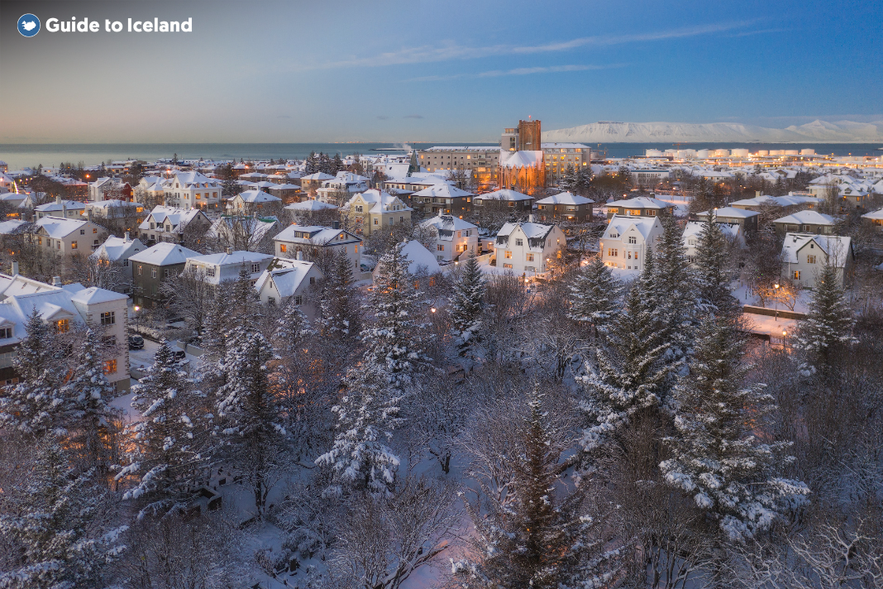
To conclude, you will find many exciting winter activities and landscapes on your journey around Iceland in January despite the chilly weather. There are many opportunities to see the northern lights and experience many other winter-only activities.
With few other travelers at the best and most popular sites, a January holiday in Iceland should be an immersive, authentic journey you'll remember for years!
- Learn about Iceland in December and Iceland in February
Whether you're staying in Reykjavik or planning a winter wonderland trip around Iceland, we hope we have helped you plan your trip. Are you hoping to visit Iceland next January? Have you visited Iceland in winter before? Share your thoughts in the comments below!
Other interesting articles

The Ultimate Guide to the Westfjords of Iceland
What is there to do in the Westfjords of Iceland? How long will you need to explore the Westfjords? What are the major towns, and what facilities do they have? Continue reading to learn about one of I...Read more
Complete Guide to the 2022 Eruption of Fagradalsfjall Volcano
Learn everything you need to know about the 2022 Fagradalsfjall volcano eruption in Iceland! How strong was the eruption? Can you visit the volcano now? How do you get there? Was the eruption danger...Read more
Live Feed from the Volcanic Eruption by Grindavik, Iceland
Volcanic eruptions near Grindavik have begun yet again. Keep on reading for an incredible, live-streamed look at 2024's eruption in the Reykjanes peninsula. Another eruption has begun on the Reykjane...Read more

Download Iceland’s biggest travel marketplace to your phone to manage your entire trip in one place
Scan this QR code with your phone camera and press the link that appears to add Iceland’s biggest travel marketplace into your pocket. Enter your phone number or email address to receive an SMS or email with the download link.

